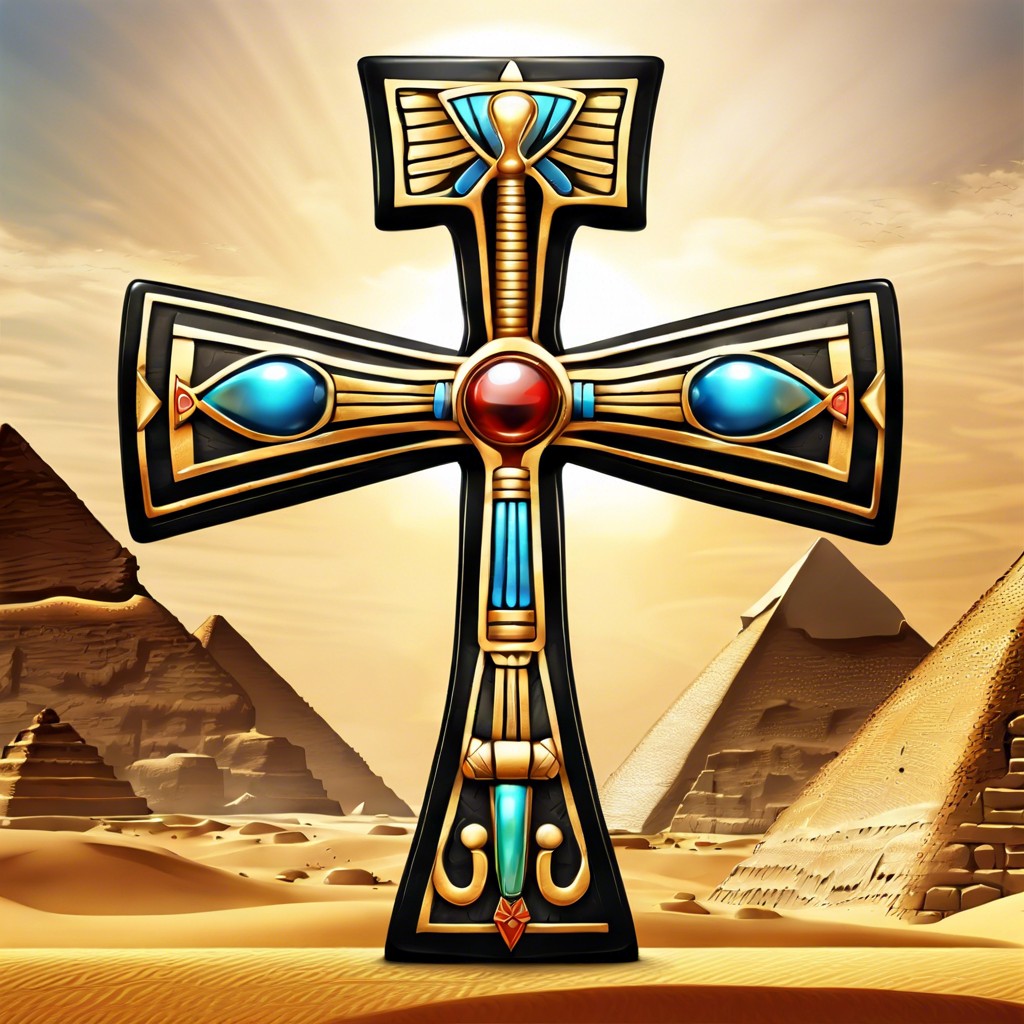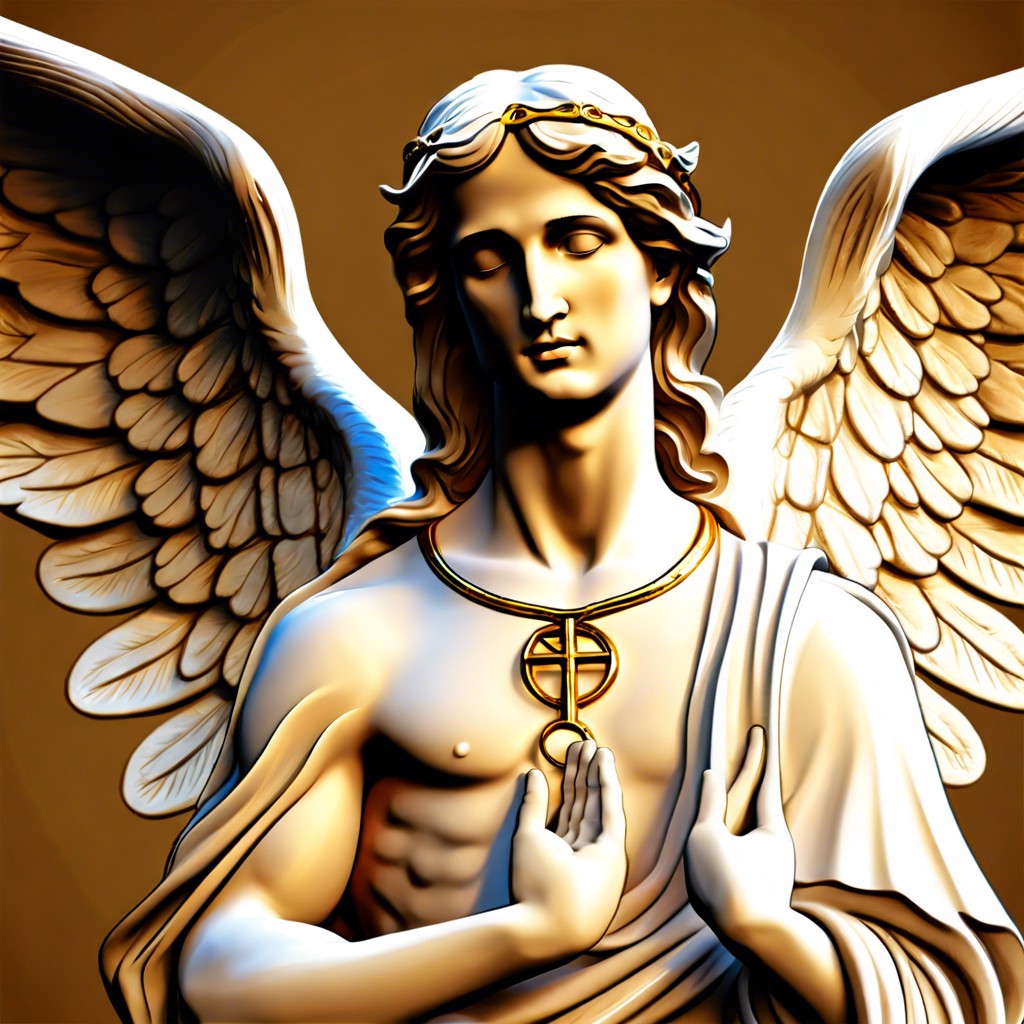The article explains the spiritual meaning and symbolism of the ankh symbol, providing insights into its cultural significance.
The ankh, a timeless emblem from ancient Egypt, is more than a mere symbol; it embodies life, both earthly and eternal. Journey through its origins, delve into its rich symbolism, explore its role in Egyptian religion and culture, and uncover its modern interpretations. This piece will also illuminate how the ankh compares to similar symbols, ensuring a comprehensive understanding of its enduring significance.
Key takeaways:
- Ankh originated in ancient Egypt, symbolizing eternal life.
- It combines masculine and feminine energy for balance and unity.
- Ankh signifies life, immortality, and a spiritual connection.
- It was integral in Egyptian religious practices and symbolism.
- Compared to Christian cross and Egyptian djed pillar for symbolism.
Origins in Ancient Egypt

The ankh is one of the most recognizable symbols from ancient Egypt. It first appeared in tomb paintings and carved on temple walls around 3150 BCE. This period marks the early days of the unified Egyptian state.
It is often depicted being held by gods, pharaohs, and other significant figures in Egyptian mythology. There’s a fascinating theory that the ankh represents the key to eternal life; it’s frequently found in contexts associated with the afterlife.
Interestingly, the ankh’s shape resembles a cross with a loop at the top. Some scholars believe this design combines symbols of masculine and feminine energy, representing balance and harmony. Others contend it could symbolize water or air—essential elements for survival.
Ancient Egyptians wore ankh amulets and incorporated the symbol into various rituals and daily objects. These widespread uses indicate its profound significance in their culture. The ankh was much more than just a religious symbol; it was a part of everyday life.
Symbolism and Meaning
Often described as a key or a cross with a loop at the top, the ankh carries profound layers of meaning.
It signifies eternal life, connecting the physical world with the spiritual realm. The loop represents the sun, a source of all life, while the crossbar mirrors the horizon and the vertical line symbolizes the path of the sun.
The ankh is also associated with the gods of ancient Egypt, embodying divine immortality. It often appears in tombs and artifacts, highlighting its role in afterlife beliefs — a promise of life beyond death.
Considered a symbol of fertility, it combines masculine and feminine elements, reflecting balance and unity.
Embraced for centuries, the ankh’s meanings remain rich and varied, deeply woven into the fabric of human symbolism.
Use in Egyptian Religion and Culture
The ankh was omnipresent in Egyptian religious practices and culture. It often appeared in tombs, temples, and on sarcophagi, symbolizing the promise of eternal life. Deities were frequently depicted holding an ankh, emphasizing their power to grant immortality.
Priests and Pharaohs wore the ankh as jewelry. This wasn’t mere decoration; it served as a powerful amulet, believed to offer protection and vitality.
In ceremonies, the ankh was used in rites of passage, from birth to death, reinforcing its association with life cycles. Hieroglyphs often featured the ankh alongside divine beings, visually communicating prayers and blessings.
Its widespread use and reverence underscore its integral role in the spiritual life of ancient Egyptians.
Modern Interpretations and Uses
Today, the ankh extends far beyond its ancient Egyptian roots. In modern contexts, it often represents life, immortality, and a connection to the spiritual world.
You’ll find it in jewelry, fashion, and art, symbolizing peace and eternal life. Many spiritual seekers use the ankh as a tool in meditation or as a charm to evoke inner strength and balance.
It’s also embraced in tattoo culture, signifying personal growth and the eternal journey of the human soul. This timeless symbol continues to resonate, bridging ancient wisdom with contemporary spirituality.
Comparisons With Similar Symbols
The ankh is often compared to other cross-like symbols, such as the Christian cross and the Egyptian djed pillar. While the ankh represents life and immortality, the Christian cross symbolizes sacrifice and resurrection.
Another symbol, the djed pillar, stands for stability and strength in ancient Egyptian culture. Although different in shape, both the ankh and the djed pillar were integral to spiritual beliefs about life and the afterlife.
In addition, the ankh resembles the key of life, sometimes likened to keys in other cultures that signify unlocking mysteries or spiritual truths. These comparisons highlight how various symbols, though distinct, often share a common thread in representing profound spiritual concepts.
Understanding these similarities deepens our appreciation for how different cultures express ideas about existence, transcending time and geography.





